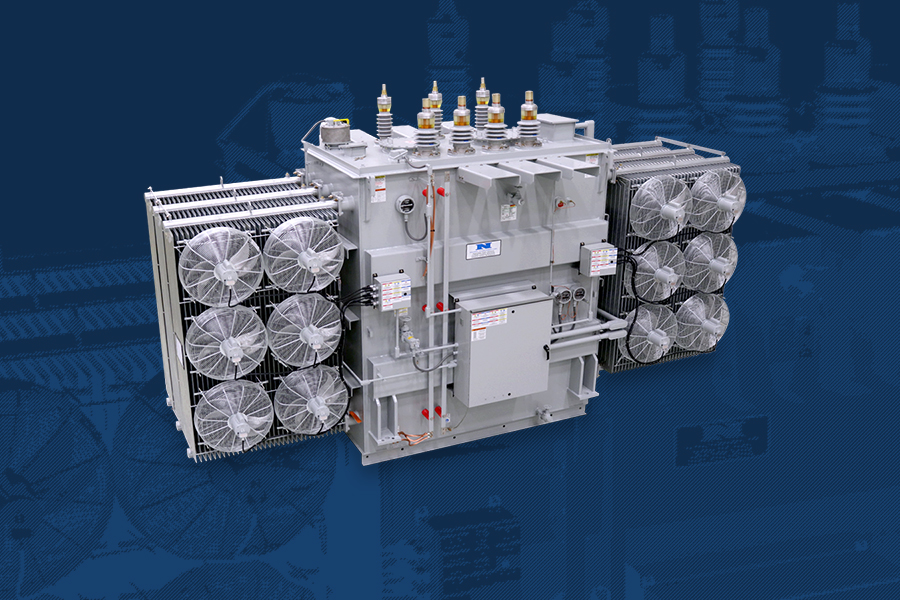When it comes to meeting the power needs of numerous major industries, Niagara Power Transformer understands that large industries come with large power demands; because of this, efficiency is a top priority. This is why we specialize in liquid-filled power transformers and offer a wide variety of types to suit the needs of nearly any application.
The purpose of any power transformer is to deliver electrical energy, and they do this by converting that energy from the higher transmission voltage generated at power substations to the more manageable distribution voltage for residential and commercial use.
Liquid-filled power transformers are unique in that they feature a liquid-based cooling process. While more complicated than traditional dry-cooling power transformers, liquid-filled power transformers provide numerous advantages that maximize their efficiency and power-generating potential.
Why Liquid-Filled Transformers?
Liquid-filled transformers use a dielectric fluid contained within to insulate the transformer’s internal components. While dry power transformers rely on convection currents generated by their own heat in order to cool themselves down, the oil-based method used by liquid power transformers provides some lucrative benefits that give them an edge in performance and efficiency.
Specifically, liquid-filled transformers are known for yielding a higher power rating. This is particularly important since it means liquid power transformers can handle greater amounts of electrical energy at a time. These advantages are a direct benefit of their liquid-based cooling system; as the fluid is distributed throughout the transformer, it cools the components faster, dissipating any heat evenly throughout.
During the event of a power overload, liquid-filled transformers are more likely to survive in working order because of their robust capabilities in managing higher power demands while thoroughly cooling themselves.
More Features and Advantages of Liquid-Filled Transformers
This type of transformer is uniquely identified by its steel drum; this houses the cooling fluid. In liquid-filled power transformers designed for substation use, it is usually housed in the middle, surrounded by the components of the transformer itself.
The tank is highly durable and sealed from all sides, meaning they can safely operate outdoors with minimal risk of leakage. While the fluid used in liquid-filled transformers is flammable, their design prevents the possibility of a fire risk. Liquid-filled power transformers are also largely immune to corrosion.
Considering substations generate extremely high amounts of power, even liquid-filled power transformers often need some backup when cooling themselves. For this reason, Niagara Power Transformer’s liquid-filled substation transformers are equipped with an array of cooling fans.
When the already-efficient liquid cooling system isn’t enough, fans mounted on either side can assist in the process. Even without immense power demands, these fans guarantee that the transformer is always cooling itself, ensuring it’s able to convert and deliver power as efficiently as possible.
What Industries Are They Best For?
Because of their efficiency and ability to withstand high loads of power, liquid-filled power transformers are relied on in industries with high power needs. Here are some of the major industrial applications they serve:
- Manufacturing
- Renewable Energy Generation
- Energy Generation for Oil and Gas Plants
- Data Centers
Niagara Power Transformer: Powering Industry For Over 100 Years
For over a century of service and innovation, Niagara Power Transformer has designed and distributed technology that helps industries around the world meet their power demands, helping them focus on what they do best. To learn more about Niagara Power Transformers’ history, range of industries served, and a wide variety of energy-converting products, contact us today.
